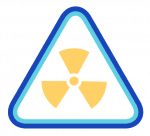Why We Test
Radon is invisible, radioactive, and in one third of all homes tested in this region. Because you can’t hear, smell, or see Radon gas, the only way to gauge its presence is to test it with a specialized unit.
You breathe the air in your workplace or home all day, and our multi-day testing allows us to see an average exposure, instead of a moment in time which could be artificially high or low depending on a variety of soil and weather conditions. Radon testing mitigation provides you with an accurate picture of what is going on inside a space.
Exposure to Radon gas is the leading cause of lung cancer in non-smokers in America. The EPA guidelines for Radon recommend testing every home every two years to make sure you prevent exposure however possible.



Radon is a hazardous gas that seeps out of the rocks and soil beneath us. Radon is a by-product of the breakdown of uranium underground, and comes up through the ground everywhere. This is not a problem outside, but Radon gets trapped inside buildings.
Unlike asbestos or other home hazards, Radon exposure is invisible. Radon is odorless, tasteless and colorless. Therefore, Radon testing mitigation is necessary to understand your exposure in new buildings, and old. Actually, new homes, and those on a slab can experience higher risks than older (more breathable) properties.
Radon can be anywhere. That is why it’s best to contact the Radon mitigation experts for your Radon testing. This radioactive gas can be especially harmful to small children and individuals with respiratory conditions.
Did you know that the EPA recommends the reduction of Radon at or above 4 picocuries per liter (pCi/L) of air?

The short answer is yes.
You can achieve simple Radon testing with a DIY Radon test. These are available for free from the State of Ohio, and for low prices online, and from big box stores.
These DIY Radon tests are acceptable offerings, but are less consistent in their ability to demonstrate actual exposure levels than professional grade, calibrated units. However, these DIY Radon tests can be a good starting point for home testing. If your DIY Radon test shows you have a high level of Radon exposure, we recommend fast Radon mitigation.
Any building you occupy (home, hospital, workplace, factory) should be tested for Radon gas exposure levels, to determine what volume of Radon gas your occupants (workers, pets, tenants, family members) may be living with. We can work with you to design your unique Radon mitigation system.
After Radon testing has determined your facility or home has a higher than acceptable Radon level, we plan a carefully designed Radon reduction system that is unique to your space and considerations.
This system can often be hidden internally, or will penetrate through a foundation wall. Yeti Restoration radon mitigation experts use a suction point at the lowest point in the building connected to PVC piping, and a Radon reduction fan to actively draw Radon gas from below the building, discharging it above the roofline.
Once above the roofline, Radon gas is exhausted into open air and the concentration of Radon drops as it is evacuated from the indoor space.
Breathe easy. We’ve done this before.
When uranium breaks down underground, it releases radon. The buildings we’re in have a lower air pressure than the soil around them and act like a vacuum, sucking that radon in through every little crack.
A carefully designed radon reduction system uses a suction point at the lowest point in the building connected to piping and a fan to actively draw this gas from below the building, discharging it above the roofline.
Once above the roofline, the radon is exhausted into open air and the concentration drops hugely.
Breathe easy. We’ve done this before.



If your building tests above 4.0 picocuries per liter (or you want a system designed anyway), we’ll custom design a Radon mitigation system for you, with full pricing and a detailed description of our recommendations.
Our team of specialists (the highest certification) will consider the aesthetic of your building, as well as the most effective mitigation method available with your constraints.
An average residential system will take less than one day to install.
Before we leave, we’ll set another test (to be picked up in 48 hours or more) to ensure we hit our goal of reducing your family’s radon exposure. Then we’ll show you how to monitor the system with the same frequency you change your furnace filter.
Breathe easy. Our team designs hundreds of successful systems every year.
Radon is everywhere that uranium is breaking down below the ground. Most of the time, the buildings we’re in have a lower air pressure than the soil around them and act like a vacuum, sucking radon into the building through every tiny crack.
Your new build is more airtight than the house your Grandma had, so gases can get trapped in there. A well designed radon reduction system creates a vacuum below the lowest part of your home or building, and vents much of the gas above the roofline before it makes it inside.
Some new build homes have a passive system installed before completion. This is definitely a step in the right direction, but not usually a game changer for your radon exposure in real life. To guarantee success, we will typically add a new suction point, and ensure that your new system will pick up the slack, and bring you safer air to breathe.
Whenever possible when we set up Radon mitigation systems, we’ll give you the option to keep the fan and PVC pipes hidden inside the house, and venting up through the attic or garage.
You always have your suction point at the lowest part of the home or building, and then draw gas to the roofline from inside the building, but with the fan assembly mounted inside the attic.
As long as we have access both above and below, plus available electricity, it may be possible to route your system through your attic or garage.

